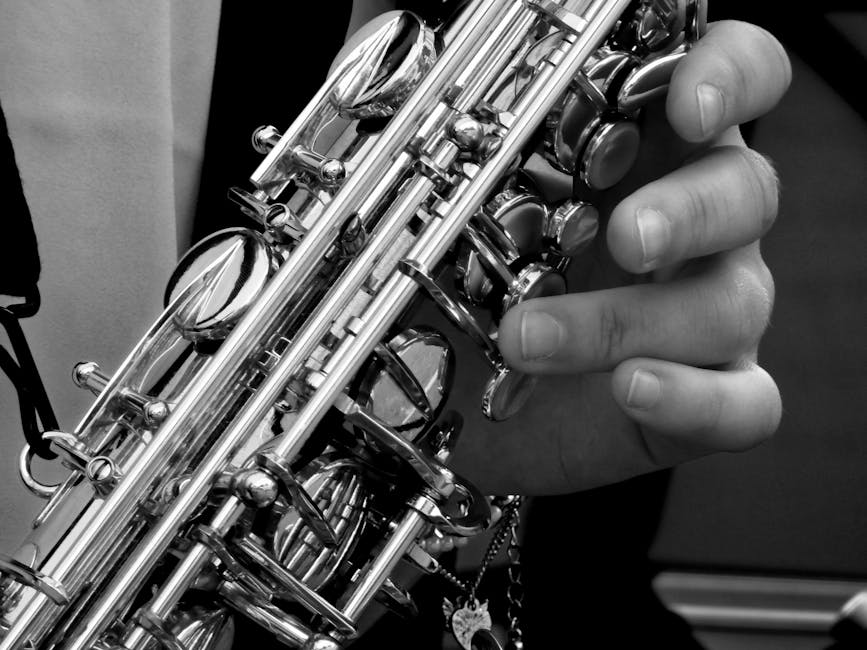Attention all aspiring songwriters! Are you tired of strumming the same old chords and feeling like your songs are falling flat? Well, fear not, because we’ve got the secret sauce to take your music to the next level: essential guitar chord progressions. These magical combinations of notes will have your audience grooving, swooning, and begging for more. So grab your guitar, dust off those strings, and get ready to rock your way to songwriting stardom.
Contents
- 1 Understanding the Circle of Fifths and Its Application in Songwriting
- 2 Mastering the I-IV-V Progression: The Backbone of Countless Hits
- 3 Exploring Minor Key Progressions for Emotional Depth
- 4 The Versatile ii-V-I Progression: Jazz Influences in Contemporary Music
- 5 Creative Uses of the vi-IV-I-V Progression for Songwriting Innovation
- 6 Navigating Modal Interchange for Unique Chord Progressions
- 7 Incorporating Secondary Dominants to Enhance Musical Tension
- 8 FAQs
- 9 Rock On with These Essential Chord Progressions!
Understanding the Circle of Fifths and Its Application in Songwriting
Have you ever stared at a circle of fifths and thought, “What the heck is this fancy wheel of musical sorcery?” Well, fear not, my fellow songwriters, because today we’re diving headfirst into the mystical world of the circle of fifths and how it can revolutionize your songwriting game.
So, what exactly is this circle of fifths, you ask? Essentially, it’s a magical wheel that organizes all 12 major and minor keys in a way that will make your musical brain explode (in a good way, of course). Each key is arranged in a way that shows their relationship to one another, making it a handy tool for understanding chord progressions, modulation, and all that jazz. Literally.
Now, you may be thinking, “But how does this wizardry actually help me write songs?” Well, my friend, let me break it down for you in layman’s terms (with a sprinkle of musical flair, of course). By using the circle of fifths, you can easily identify which chords work well together, create smooth transitions between different keys, and even spice up your songwriting with interesting chord progressions that will make your listeners go, “Wow, I never knew I needed this in my life!”
Incorporating the circle of fifths into your songwriting process is like adding a secret sauce to your musical creations – it just takes your songs from meh to yeah (I promise I won’t quit my day job to pursue a career in rhyming). So, next time you’re stuck in a songwriting rut, just whip out that trusty circle of fifths, let it guide you through the musical maze, and watch as your songs take on a whole new level of awesomeness. So go forth, my fellow songwriters, and may the circle of fifths be ever in your favor. *Cue epic music*
Mastering the I-IV-V Progression: The Backbone of Countless Hits
So you think you know your I-IV-V progression, huh? Well, buckle up, because we’re about to take a deep dive into this powerhouse chord progression that has fueled countless hits in the music industry.
First things first, let’s break down what the I-IV-V progression actually means. In the key of C major, for example, the chords would be C (I), F (IV), and G (V). These three chords are like the holy trinity of music, creating a foundation that can be found in everything from blues to pop to rock.
Now, mastering the I-IV-V progression isn’t just about playing these three chords in succession. It’s about understanding how to manipulate them, create tension and release, and ultimately, craft a killer melody on top.
So, grab your guitar or sit down at the piano, and get ready to explore the ins and outs of the I-IV-V progression. Who knows, maybe the next hit song will be born out of your newfound mastery!

Exploring Minor Key Progressions for Emotional Depth
Have you ever listened to a song and felt like it reached into your soul and squeezed your heart in just the right way? Chances are, that song was probably in a minor key. Minor key progressions have a special way of evoking emotions and adding depth to music that major keys just can’t quite match. So, let’s dive into the world of minor key progressions and explore how you can use them to add some serious emotional punch to your music.
One of the most common minor key progressions is the i-iv-V-i chord progression. This progression has a haunting, melancholic feel that can really tug at the heartstrings. Use it in your next ballad or love song to add a touch of drama and emotion. Trust us, your listeners will be reaching for the tissues before you know it.
Another powerful minor key progression is the i-VI-III-VII progression. This progression has a bittersweet quality that can bring a sense of longing and nostalgia to your music. It’s perfect for those moments when you want to convey a deep sense of yearning or loss. Just make sure to have a box of chocolates on hand for when the tears start flowing.
And let’s not forget about the ol’ reliable i-ii-III progression. This progression has a sense of tension and release that can really draw the listener in. Use it in your next epic power ballad to add a touch of grandeur and sophistication. Your listeners will be in awe of your musical prowess and they may even bow down to you as their new minor key overlord.

The Versatile ii-V-I Progression: Jazz Influences in Contemporary Music
Picture this: you’re listening to your favorite Top 40 hit, grooving along to the catchy chorus, when suddenly you hear it – that unmistakable ii-V-I progression. That’s right, jazz influences are sneaking their way into contemporary music, adding a touch of sophistication to those pop tunes.
It’s like jazz and pop had a secret love child, and the result is a musical mashup that’s catching everyone’s ear. The ii-V-I progression, with its smooth and sophisticated sound, is like the fedora-wearing jazz musician crashing the flashy pop star’s party. And guess what? It’s a match made in musical heaven.
So next time you hear that familiar chord progression in a chart-topping hit, tip your hat to the jazz greats who paved the way for this surprisingly versatile progression to infiltrate the mainstream music scene. After all, jazz influences have been shaping music for decades, so why not let them work their magic in contemporary tunes?
Whether you’re a die-hard jazz fan or just a casual listener, there’s no denying the irresistible charm of the ii-V-I progression. So sit back, relax, and let those jazzy vibes wash over you as you groove along to the latest pop hits – jazz influences never sounded so good!

Creative Uses of the vi-IV-I-V Progression for Songwriting Innovation
Are you tired of the same old chord progressions in your songwriting? Looking to add a fresh, innovative spin to your music? Look no further than the vi-IV-I-V progression!
While this progression may be a staple in many pop songs, there are countless creative ways you can use it to breathe new life into your music. Here are some out-of-the-box ideas to help you shake things up:
- **Reverse Order:** Why not flip the progression on its head and start with the V chord before resolving to the vi? This unexpected twist can add a surprising element to your song.
- **Modal Madness:** Experiment with playing the progression in different modes, such as Dorian or Mixolydian, to give your music a unique flavor and color.
- **Harmonic Substitution:** Swap out some of the chords in the progression with their relative majors or minors to create an intriguing harmonic variation.
By thinking outside the box and experimenting with different ways to use the vi-IV-I-V progression, you can inject a sense of innovation and excitement into your songwriting. So go ahead, have fun with it, and let your creativity run wild!
Modal interchange can be a tricky beast to tame in your chord progressions, but fear not brave music explorer! With a little creativity and a touch of madness, you can unlock a whole new world of unique sounds and harmonies. Here are a few tips to help you navigate the wild waters of modal interchange:
Embrace the chaos: Don’t be afraid to mix and match chords from different modes. Who says you can’t throw a major chord in the middle of a minor progression? Embrace the unexpected and let your ears guide you to uncharted musical territories.
Experiment with unusual combinations: Try throwing in a diminished chord or a borrowed chord from a distant key. Mix and match until you find that magical combination that tickles your fancy. The weirder, the better!
Listen, listen, listen: Pay attention to how your favorite artists use modal interchange in their music. Borrow ideas, steal techniques, and make them your own. The possibilities are endless, so don’t be afraid to dive headfirst into the wacky world of modal interchange!
Incorporating Secondary Dominants to Enhance Musical Tension
So you want to add a little spice to your musical compositions? Look no further than incorporating secondary dominants into your arsenal. These bad boys are like the secret agents of music theory, sneaking in unexpectedly to create tension and drama.
Imagine you’re cruising along in C major, basking in its warm, cozy vibes. All of a sudden, out of nowhere, a G7 chord appears, demanding your attention like a diva at center stage. This secondary dominant of C major shakes things up, injecting a jolt of excitement into your otherwise predictable progression.
But wait, there’s more! Secondary dominants aren’t just limited to major keys. They can slink their way into minor keys as well, wreaking havoc and causing mischief wherever they go. Picture an A7 chord crashing into an unsuspecting Am, turning a melancholic melody into a rollercoaster of emotions.
So next time you’re feeling stuck in a musical rut, reach for the secondary dominants and watch as your compositions come alive with tension and drama. Just remember, with great power comes great responsibility – use these sneaky chords wisely, or risk sending your audience on a wild musical ride they’ll never forget.
FAQs
What are some common chord progressions used in songwriting?
Well, think of the classic ones like the I-IV-V or the ii-V-I. But don’t limit yourself to the classics, experiment with different progressions to really spice up your songs!
How can I make my chord progressions more interesting?
Try adding in some unexpected chords or modulating to different keys. Don’t be afraid to break the rules and see where it takes you!
What are some tips for creating my own unique chord progressions?
Listen to a variety of music genres for inspiration and don’t be afraid to play around with different chord voicings. And remember, there are no wrong answers in music!
How can I use chord progressions to enhance my songwriting?
Chord progressions can help set the mood for your lyrics and create a strong foundation for your melodies. They can really elevate your songwriting to the next level!
Any final words of wisdom for aspiring songwriters when it comes to chord progressions?
Just keep experimenting and don’t be afraid to make mistakes. The best songs often come from taking risks and trying new things. So, have fun and keep strumming those chords!
Rock On with These Essential Chord Progressions!
Whether you’re strumming along in your bedroom or rocking out on stage, mastering these essential guitar chord progressions will take your songwriting to the next level. So grab your guitar, strap on your favorite pick, and let the creativity flow! With these chord progressions in your repertoire, you’ll be composing catchy tunes in no time. Happy strumming!



